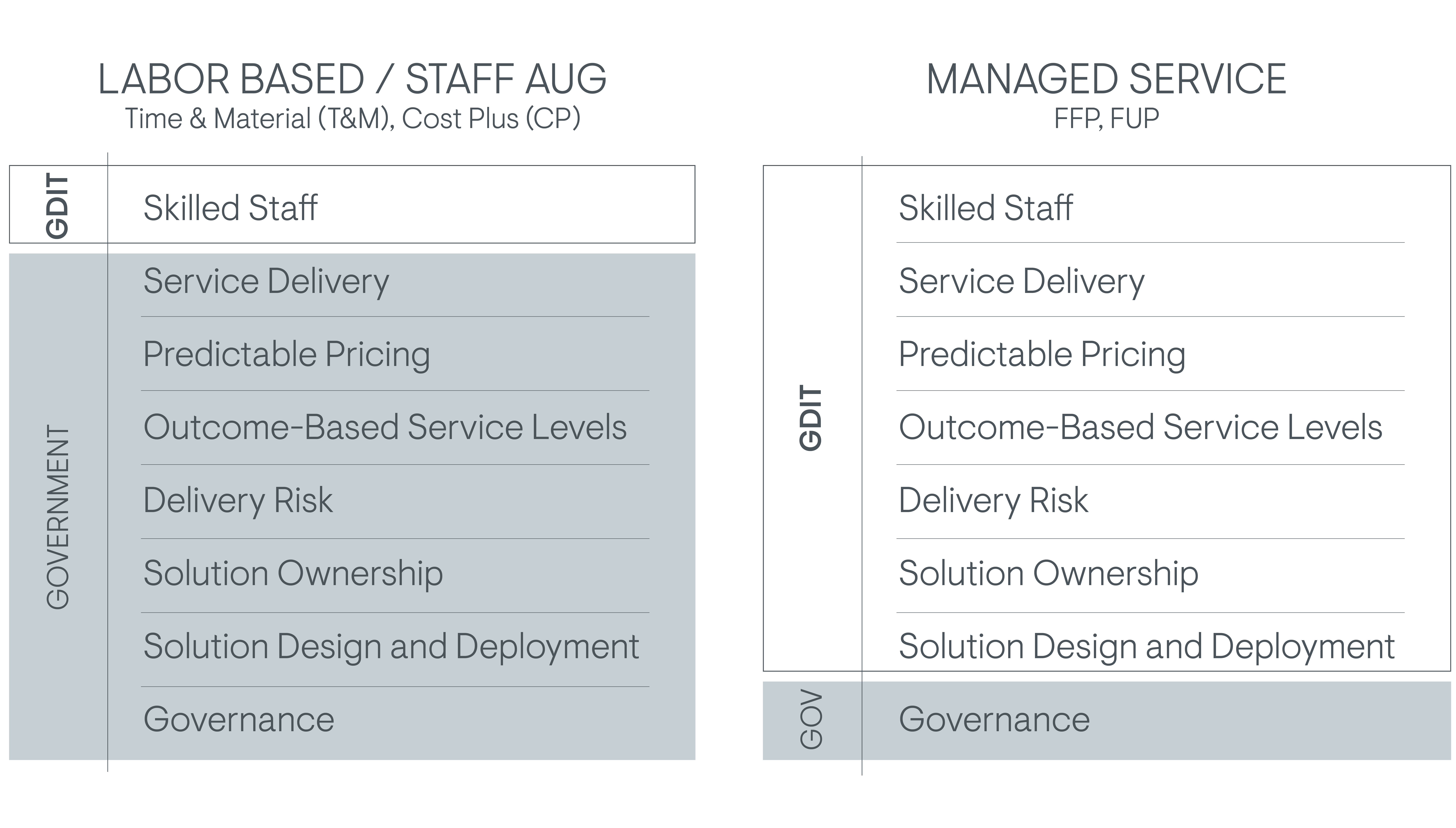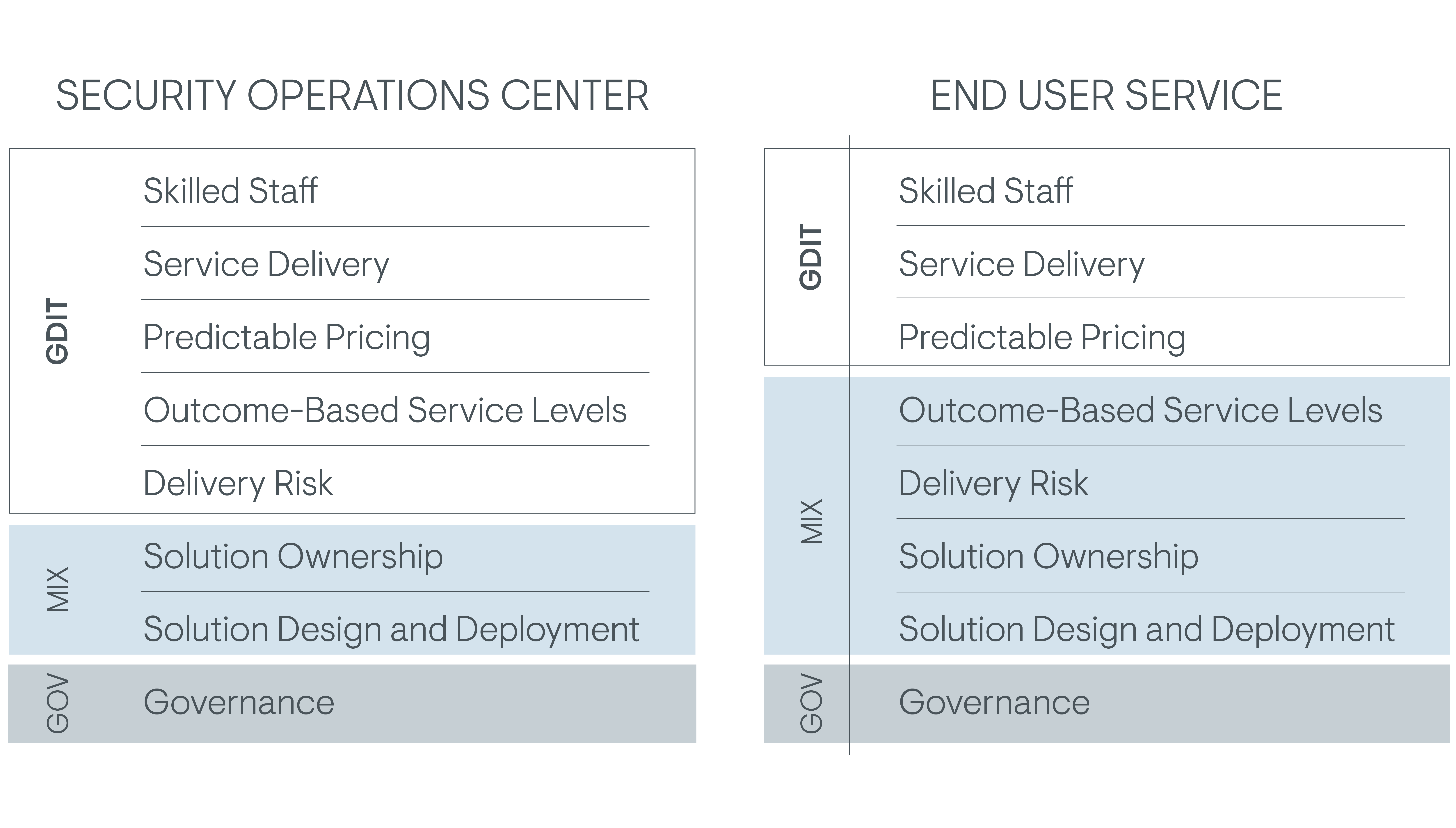Across government, agencies are turning to managed service providers to help maintain and modernize their IT environments which enables them the agency to increase focus on their missions. It’s easy to see why: A managed services approach allows organizations to achieve long-term efficiencies through standardization and optimization of services, technologies, and delivery methods which create economies of scale. Agencies realize value from higher quality services delivered at a at a lower cost incorporating continual service improvement, enhanced transparency and predictability.
But while many agencies can see the benefits of moving to a managed services model, others are apprehensive about the perceived trade-offs or loss of control involved.
GDIT conducted a study to explore how federal agencies view managed services, the key motivators and de-motivators driving their decisions to use managed service providers, and which types of services they need most. We found that while nearly 60% of respondents are looking to managed service providers to reduce costs, nearly as many (55%) are concerned about maintaining security and operational control.
While clients cited cost savings and control, mission focus, service performance, risk reduction, and workforce support as their top reasons for moving to a managed services model, they were still concerned about maintaining security control, encountering unexpected costs or overruns, and a general loss in control in essential IT services. Additionally, while hybrid managed service models exist, they are typically not well understood and can mean different things to different organizations, which only adds to some agencies’ wariness of managed services as a whole.
The GDIT Hybrid Managed Services Approach
To GDIT, this signaled a clear need for a different kind of hybrid managed services model. One that could serve as a bridge for clients who want to go to managed services in the future, but also provides flexibility that lets agencies realize many of the benefits of managed services without having to move to a full managed service. We envisioned a hybrid model that would provide clients with a mechanism to evaluate managed service models in order to determine how to develop a purpose-built approach to adoption that best fit their organization. This approach is designed to balance a client’s concerns and hesitations with their desire for the outcomes a managed service approach can provide.
For example, when we look across the dimensions of service delivery in a traditional staff augmentation or managed service model it’s clear who is responsible for what. In staff augmentation the government is responsible for most aspects, whereas in a managed service the contractor is responsible for most aspects.

The gray area in hybrid is where it can be murky, as such it’s critical to establish clear lines of responsibilities using a responsibility assignment matrix (RACI), and governance model that can quickly address potential areas of uncertainty in these complex, multi-contractor environments. That’s why it’s important to partner with a provider uniquely experienced in working with the government adopting this delivery model.

For example, for one of our clients we run their security operations center where we provide aspects of their model in a contractor-owned, contractor operated (COCO) model but the government retains aspects such as maintaining ownership of the underlying networking hardware, resulting in a shared responsibility between GDIT and the government.
In another where we provide end user services, the government retains more direction to support white glove use cases, therefore there are more shared dimensions, but GDIT is still providing these with a predictable pricing model with ownership of elements within our span of control.
Our Approach in Action
Through right sizing the adoption of managed services in a hybrid manner to the organizational readiness and goals, these organizations were able to realize benefits of this hybrid model within their risk tolerance. Organizations differ and the environments and services within those organizations differ too. As these services mature, they may continue to shift further to managed services or remain in this hybrid model. It’s important to have a partner who can navigate the managed services landscape, guide your experimentation within it, and then collaboratively develop an approach that works for your organization.






